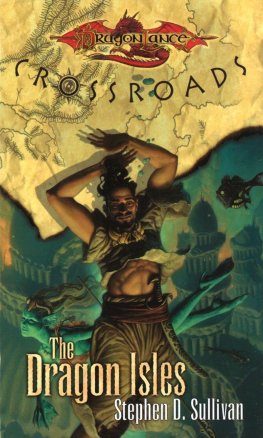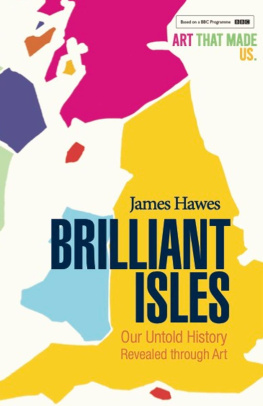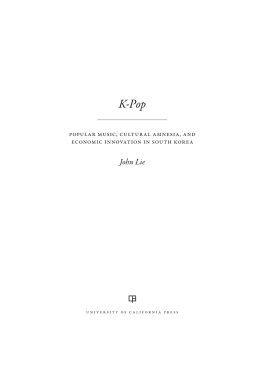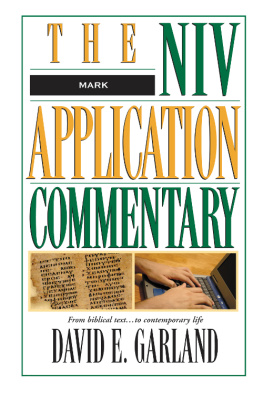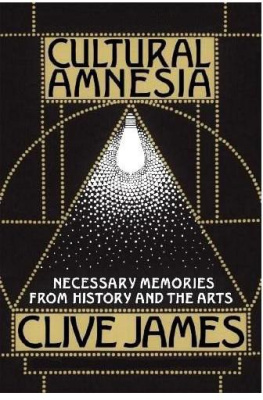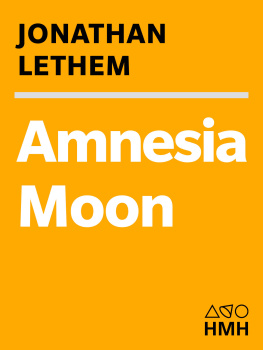Mark J. Rauzon - Isles of Amnesia
Here you can read online Mark J. Rauzon - Isles of Amnesia full text of the book (entire story) in english for free. Download pdf and epub, get meaning, cover and reviews about this ebook. publisher: University of Hawaii Press, genre: Romance novel. Description of the work, (preface) as well as reviews are available. Best literature library LitArk.com created for fans of good reading and offers a wide selection of genres:
Romance novel
Science fiction
Adventure
Detective
Science
History
Home and family
Prose
Art
Politics
Computer
Non-fiction
Religion
Business
Children
Humor
Choose a favorite category and find really read worthwhile books. Enjoy immersion in the world of imagination, feel the emotions of the characters or learn something new for yourself, make an fascinating discovery.

- Book:Isles of Amnesia
- Author:
- Publisher:University of Hawaii Press
- Genre:
- Rating:5 / 5
- Favourites:Add to favourites
- Your mark:
- 100
- 1
- 2
- 3
- 4
- 5
Isles of Amnesia: summary, description and annotation
We offer to read an annotation, description, summary or preface (depends on what the author of the book "Isles of Amnesia" wrote himself). If you haven't found the necessary information about the book — write in the comments, we will try to find it.
Isles of Amnesia — read online for free the complete book (whole text) full work
Below is the text of the book, divided by pages. System saving the place of the last page read, allows you to conveniently read the book "Isles of Amnesia" online for free, without having to search again every time where you left off. Put a bookmark, and you can go to the page where you finished reading at any time.
Font size:
Interval:
Bookmark:
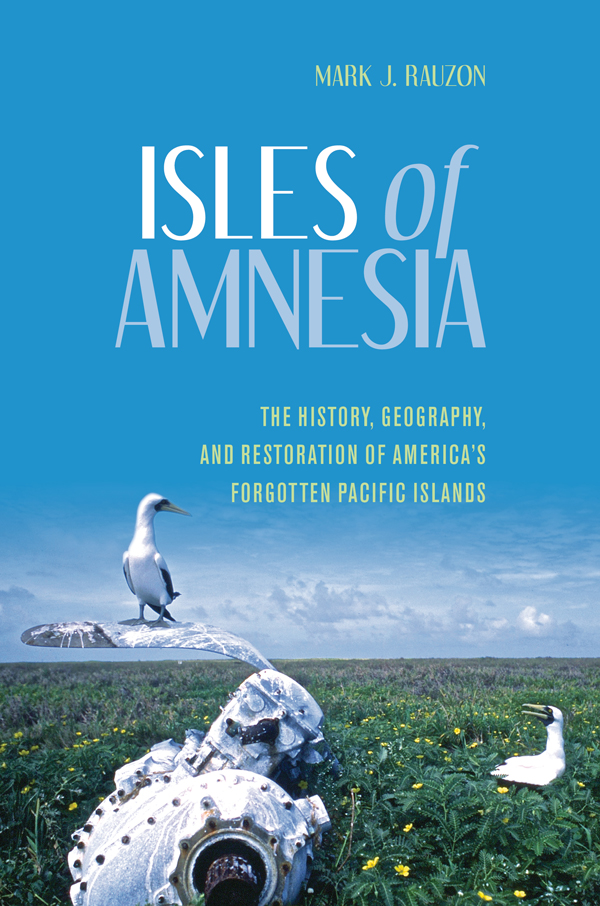
ISLES OF AMNESIA
THE HISTORY, GEOGRAPHY, AND RESTORATION OF AMERICAS FORGOTTEN PACIFIC ISLANDS
Mark J. Rauzon
A Latitude 20 Book
UNIVERSITY OF HAWAII PRESS
HONOLULU
University of Hawaii Press
www.uhpress.hawaii.edu
2016 University of Hawaii Press
All rights reserved
Library of Congress Cataloging-in-Publication Data
Rauzon, Mark J., author.
Isles of amnesia : the history, geography, and restoration of Americas forgotten Pacific Islands / Mark J. Rauzon.
pages cm
A latitude 20 book.
Includes bibliographical references and index.
ISBN 978-0-8248-4679-4 (paperback : alk. paper)
1. Island ecologyPolynesiaHistory. 2. IslandsPolynesiaHistory. 3. Coral reefs and islandsPolynesiaHistory. I. Title.
QH198.A1R38 2016
577.5'20996dc23 2015029528
ISBN for this edition:
978-0-8248-5752-3 (EPUB)
978-0-8248-5753-0 (Kindle)
Also available:
ISBN: 978-0-8248-5753-0 (Kindle)
ISBN: 978-0-8248-5752-3 (EPUB)
ISBN: 978-0-8248-5754-7 (PDF)
ISBN: 978-0-8248-4679-4 (Paperback)
For further information, please visit:
www.uhpress.hawaii.edu
To the memory of
Daniel Vice and Ken McDermond,
for fighting the good fight for
Pacific Island conservation.
And to my niece Ava Tamini,
now a free bird.
CONTENTS
ACKNOWLEDGMENTS
THIS BOOK could not have been written without the support of the US Fish and Wildlife Service (USFWS). I am especially indebted to Beth Flint and to the late David Woodside from the Pacific Remote Islands National Wildlife Refuge office in Honolulu. The National Oceanic and Atmospheric Administration (NOAA) and US Coast Guard ship crews that carried our USFWS camps to the islands are commendable and their scientific teams inspirational.
I am grateful to David Duffy of the University of Hawaiis Botany Department for access to American Samoa, while Mino Fialua of the National Park of American Samoa made my experiences safe and even possible. Craig Rowland of the USFWS helped our Wake Island work get started; William Everett of the Endangered Species Recovery Council greatly advanced the effort; Louise Bell, Dave Boyle, and John Gilardi helped us succeed. We are obliged to the US Air Force and Chugach Federal Solutions for Wake Island accommodations. Lou Hitchcock, historian of Wake Island, generously provided information.
On Guam, I was greatly assisted in my research by Craig Clark, Bjorn Lardner, Suzanne Medina, Joe Schwagerl and Shane Siers. I thank Harry Carter, Kim Nelson, and Kuniko Otsuki of the Japanese-Korea Seabird Committee of the Pacific Seabird Group for a grant that helped me visit Guam. Providing aid and comfort, as ever, in Hawaii was long-term supporter Karla Kral and my old professor at the University of Hawaii, Sheila Conant.
Family photographs came from Tada Lyons Darsie, who discovered her father Torry Lyons collection of photos of the Wake rail and gladly shared them, while Karen Klitz accessioned them to the Museum of Vertebrate Zoology, Berkeley, California. Carol Nickisher allowed me access to her father Bert Vootmeyers Pan American Airways journals and photos from 1939. Also, Duncan Koller granted access to his father Carl Kollers Pan Am journal from 1935; Albert Kahn shared his incredible Wake Island POW story; Richard K. Brunner donated 1946 Wake Island photos and stories; and Kendra Maty, Alexis Rudd and Lee Ann Woodward provided key maps at a critical time.
I thank Helen James and Storrs Olson of the Division of Birds at the Museum of Natural History for supporting my Smithsonian visiting scholar grant. Also insights from A. Binion Amerson Jr., Roger B. Clapp, and Doug Forsell helped me understand the Smithsonian Institutions role in the Pacific Project. Bobby Camara and Ilima Piianaia helped me access the Panalaau memories of the Kamehameha student-colonists. Dick Anderson, Angela Kay Kepler, and Betty Anne Schreiber are due my thanks for their challenging work at Kiritimati. Kudos to my partner in crime, Rick Steiner, for getting FOIA documents from the Department of Defense for our biowarfare research, and to Jim Sohns and other vets for talking story for what they went through during Project SHAD.
I am grateful to Sandy Bartle, Allen Glaberson, Craig Harrison, Tina Jones, Peter Pyle, Bob Stallings and Alex Wegmann for provided information and comments on early drafts. Storrs Olson, Susan Campbell, and John Donohue provided insightful edits that helped immeasurably. Without a sabbatical from the Peralta District of Community Colleges, particularly Laney College of Oakland, California, I could not have finished the book. I also thank the Community of Writers at Squaw Valley for a scholarship. Ever supportive is my wife Suzanne and my parents Irene and Eli Rauzon. Countless others helped in innumerable ways to make this at all possible, and I am indebted to them all. Mahalo!
INTRODUCTION
THE SWAN SONG of the George W. Bush administration was an environmental act so audacious that with the stroke of a pen Bush became one of the greenest presidents, right up there with Teddy Roosevelt in protecting federal land (and water) from development. On January 6, 2009, two weeks before he was to leave office, Bush created three marine national monuments: the Pacific Remote Islands Marine National Monument, the Rose Atoll Marine National Monument, and the Mariana Trench Marine National Monument. And, like TR, GW used the 1906 Antiquities Act, protecting approximately 195,000 square miles of some of the planets richest coral reef real estate. Then, on September 26, 2014, President Barack Obama extended the protected areas in the Pacific Remote Islands Marine National Monument to include the full Exclusive Economic Zones, out to two hundred miles for several islands. The geometry of the area in the surrounding circles added about six fold to the monuments size, including over 485,000 square miles of ocean areathree times larger than the state of California. This is the largest marine protected area on the planet, spanning the Central Pacific Ocean between the Tropics of Cancer and Capricorn, on both sides of the international date line and the equator.
Few people have ever heard of the flyspecks of land enveloped by the marine monuments. Who knows about Howland Island, the ratoll where Amelia Earhart was headed; or Baker Island, where germ warfare testing took place; or Jarvis Island, the catoll on the equator? Perhaps better known are the military bases of Wake Island and Johnston Atoll, and the Palmyra Atoll yacht harbor. But Uncle Sam had been sailing out here for centuries, going about his business in these forbidden seas and desolate isles of Oceania, far enough away to be out of sight, out of mind, where anything goes, and often did, only to be quickly forgotten. Combining these concepts is the idea for titling this book Isles of Amnesia .
Each island has a hidden history, a secret story to tell, and an ecological lesson to teach. The commingled histories of people in the Pacific, and their commensal animals that share our table reveal a truth about our conquest and colonization. Although these islands have a shared lineage of ancient Polynesian or Micronesian discovery, many were claimed by Yankee whalers who named some such as New Nantucket, New York, Washington, and American Islands. Benjamin Franklin himself wished to convey the conveniences of life, as fowls, hogs, goats, cattle, corn, iron, & c., to those remote regions which are destitute of them, by personally delivering thus items to the South Seas. Whalers and guano collectors visited in the early and mid-nineteenth century, with the military and government scientists following in their wake. Especially notable was the US South Seas Exploring Expedition of 18381841, the oceanic equivalent of the Lewis and Clark expedition, which properly charted many of the ship-eating reefs and desert islands and whose collections of artifacts and specimens became the foundation of the Smithsonian Institution. With the islands now charted, a great rush of Pacific exploration in the late nineteenth century pushed the American frontier to the rims of the Pacific basin as we manifested our destiny. In 1859, the German geographer E. Behm coined a term for this regionDas Amerikanische Polynesien, or American Polynesiato describe a discrete geographic region that was under the influence of the United States. But the area of American ownership is more accurately referred to as Insular Pacific America because the vast region spans from Hawaii to Samoa to Guam, and their neighborssmall, obscure tropical islands that are hundreds, if not thousands, of nautical miles from each other.
Font size:
Interval:
Bookmark:
Similar books «Isles of Amnesia»
Look at similar books to Isles of Amnesia. We have selected literature similar in name and meaning in the hope of providing readers with more options to find new, interesting, not yet read works.
Discussion, reviews of the book Isles of Amnesia and just readers' own opinions. Leave your comments, write what you think about the work, its meaning or the main characters. Specify what exactly you liked and what you didn't like, and why you think so.


